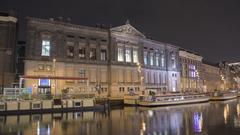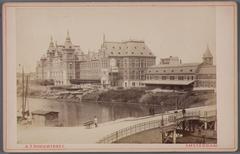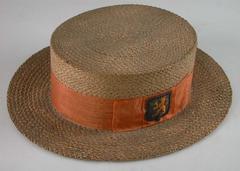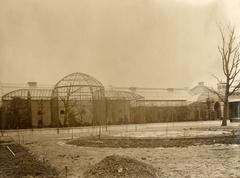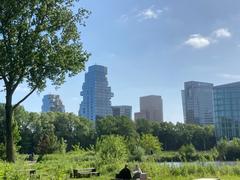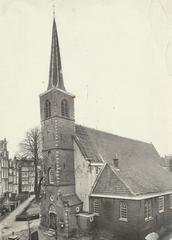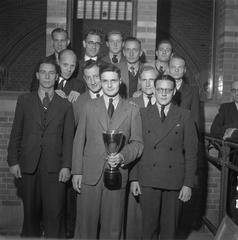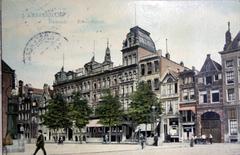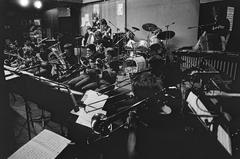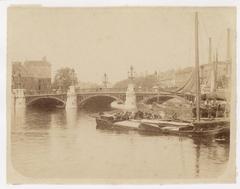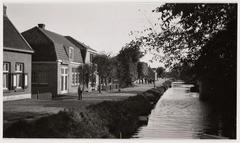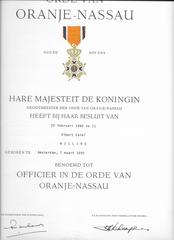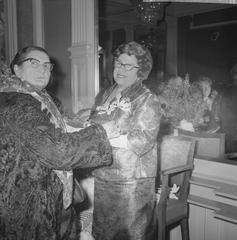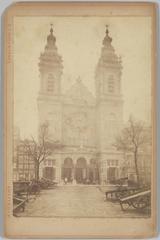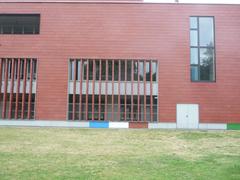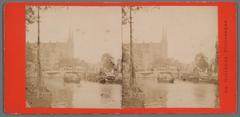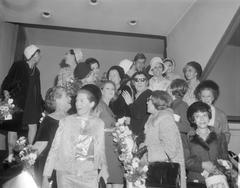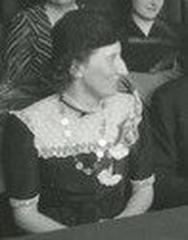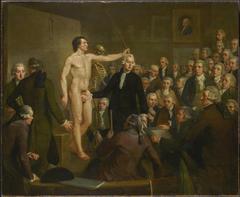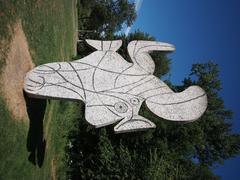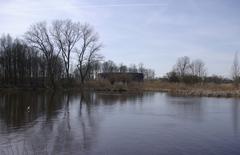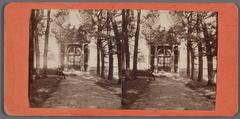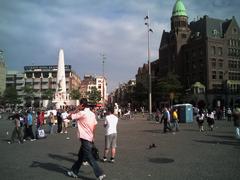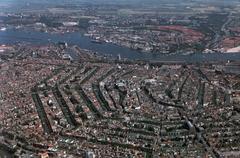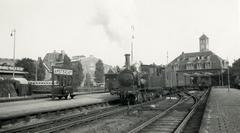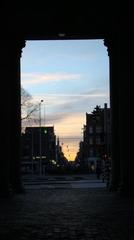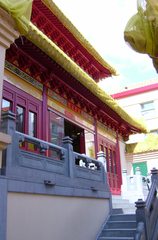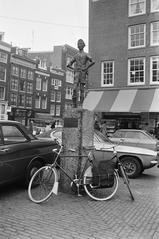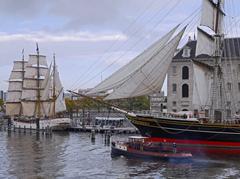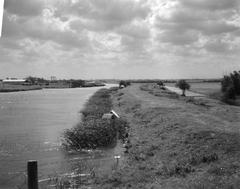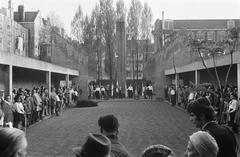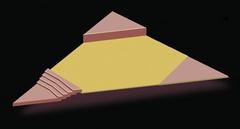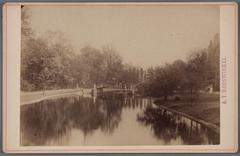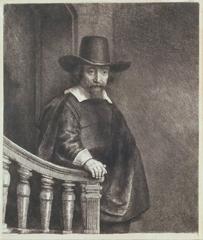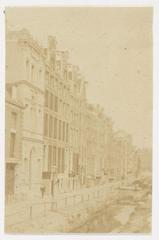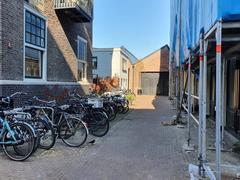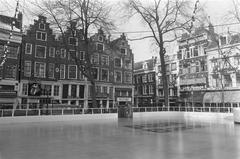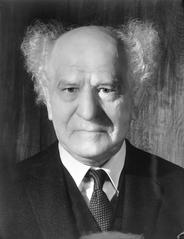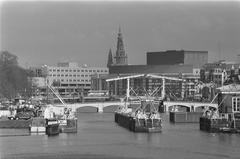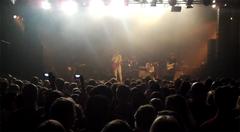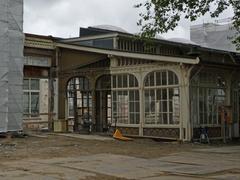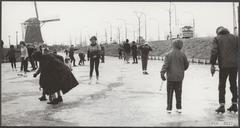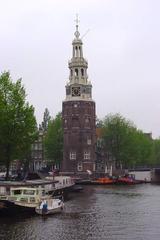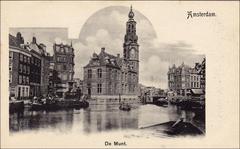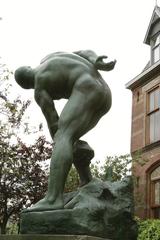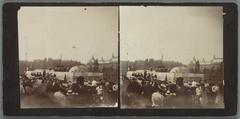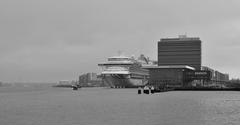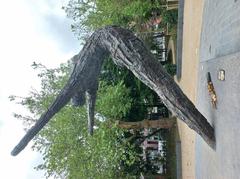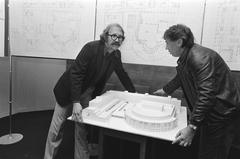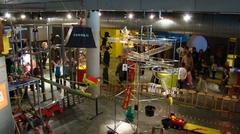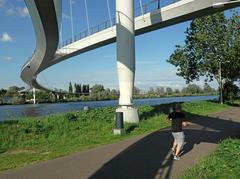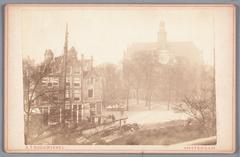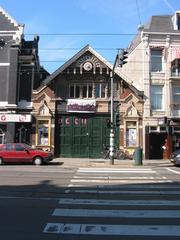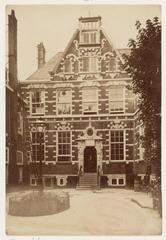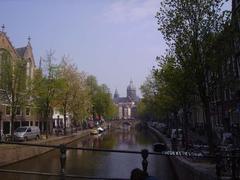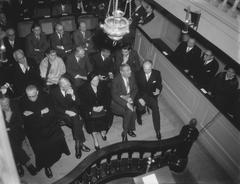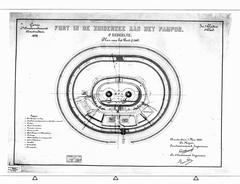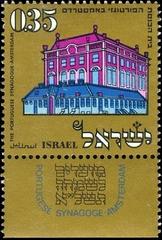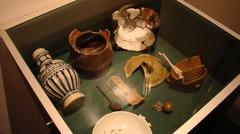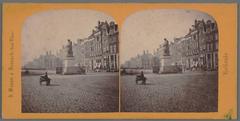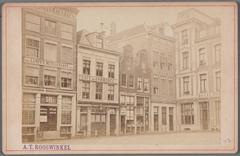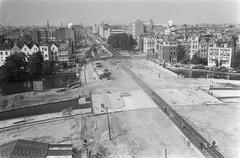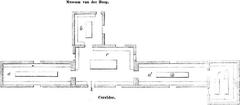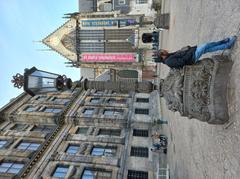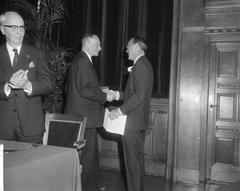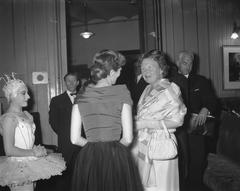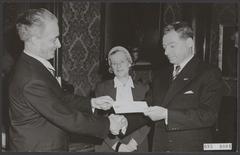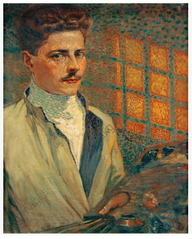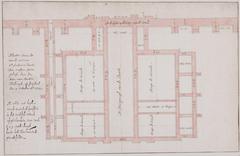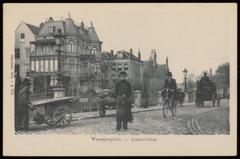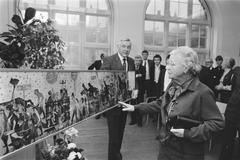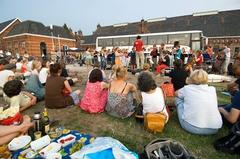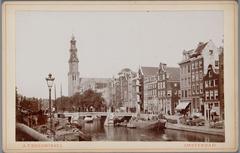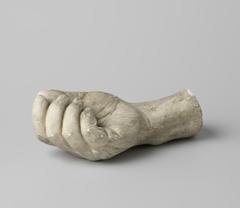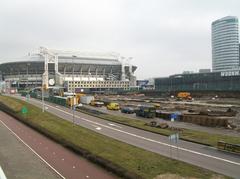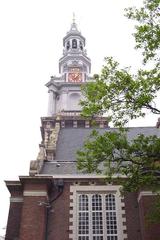
Schouwburg of Van Campen Amsterdam: Visiting Hours, Tickets, and Historical Site Guide
Date: 03/07/2025
Introduction to the Schouwburg of Van Campen and Its Historical Significance
Situated in the cultural heart of Amsterdam, the Schouwburg of Van Campen is renowned as the city’s first purpose-built theatre and a foundational institution in the development of Dutch public theatre. Designed by Jacob van Campen and inaugurated in 1638, it epitomized the artistic and civic ambitions of the Dutch Golden Age, positioning Amsterdam as a leading European cultural capital. The premiere of Joost van den Vondel’s “Gysbrecht van Aemstel” inaugurated both a theatrical tradition and the term “schouwburg” (theatre) itself (ITA History; Britannica).
Although the original wooden theatre was lost to fire in 1772, its legacy continues through the Stadsschouwburg Amsterdam, a neo-renaissance theatre on Leidseplein that remains a vibrant center for the performing arts. Visitors today can explore the Schouwburgpoort on Keizersgracht, attend performances at the Stadsschouwburg, and experience Amsterdam’s living theatrical tradition (Theatre Architecture EU; Amsterdam.info).
This guide presents the Schouwburg’s rich history, architectural significance, visitor information (including tickets, opening hours, and accessibility), and practical tips. Whether you are a history lover, theatre aficionado, or an inquisitive traveler, you’ll find all the essentials for exploring this emblematic Amsterdam site and its cultural legacy.
Table of Contents
- Introduction
- Origins and Early Development (1638–1772)
- Catastrophe and Rebirth: Fires and Reconstruction (1772–1894)
- The Neo-Renaissance Stadsschouwburg: A New Era (1894–Present)
- Artistic Legacy and Cultural Significance
- Modernization and the 21st Century
- Enduring Traditions and Revival
- Visiting the Stadsschouwburg Amsterdam
- The Schouwburg of Van Campen: History, Visiting Information, and Cultural Legacy
- Practical Visitor Tips for the Schouwburg of Van Campen: Visiting Hours, Tickets, and Amsterdam Historical Sites Guide
- Summary and Final Tips
Origins and Early Development (1638–1772)
The Schouwburg of Van Campen, designed by Jacob van Campen, opened in 1638 on Amsterdam’s Keizersgracht. As the city’s first dedicated theatre, it reflected the prosperity and cosmopolitan spirit of the Dutch Golden Age. The inaugural performance, “Gysbrecht van Aemstel” by Joost van den Vondel, set a theatrical tradition that endured for centuries (ITA History). The wooden structure quickly became a central cultural landmark and a symbol of civic pride.
Catastrophe and Rebirth: Fires and Reconstruction (1772–1894)
A devastating fire in 1772 destroyed the original theatre, claiming several lives. Undeterred, Amsterdam rebuilt the theatre on Leidseplein in 1774. Subsequent renovations improved the building’s safety and comfort, including the addition of a stone facade in 1874. However, another fire in 1890 led to the construction of a new, fire-resistant theatre, funded by the city’s elite (ITA History).
The Neo-Renaissance Stadsschouwburg: A New Era (1894–Present)
Opened in 1894, the current Stadsschouwburg features a neo-renaissance exterior and a Baroque-style auditorium, designed by A.L. van Gendt and the Springer brothers. The theatre’s horseshoe-shaped hall and Royal Box reflect its longstanding social and cultural importance. Modern renovations have enhanced accessibility and audience comfort, while preserving its historic grandeur (ITA History).
Artistic Legacy and Cultural Significance
The Stadsschouwburg has served as the stage for Dutch Opera, National Ballet, and leading theatre companies. Its portrait gallery honors Dutch performing artists and award winners. Today, the theatre is known for contemporary dance, musicals, and children’s performances, as well as its commitment to artistic innovation and tradition (ITA History).
Modernization and the 21st Century
Renovations in the late 1980s and the opening of the Rabo Hall in 2009 have modernized the Stadsschouwburg, increasing its capacity and enhancing amenities. The theatre’s New Foyer offers views over Lijnbaansgracht and has revitalized the venue as a dynamic cultural hub (ITA History).
Enduring Traditions and Revival
The annual performance of “Gysbrecht van Aemstel” was revived in recent years, exemplifying the theatre’s role in preserving and reinterpreting Dutch artistic heritage (ITA History).
Visiting the Stadsschouwburg Amsterdam
Tickets and Booking
Purchase tickets via the Stadsschouwburg Amsterdam website or at the box office. Prices typically range from €15 to €50, depending on performance and seating. Early booking is advised.
Opening and Visiting Hours
The theatre is open during performance times. Box office hours are 12 PM–6 PM on weekdays and two hours before performances on weekends. Guided tours are occasionally available—check the website for current schedules.
Accessibility
The Stadsschouwburg is fully accessible, providing wheelchair ramps, lifts, and reserved seating. Contact the theatre in advance for assistance.
Location and Getting There
Located on Leidseplein, the theatre is accessible via tram lines 1, 2, 5, and 7. It is close to Central Station and surrounded by cafes, restaurants, and hotels.
Nearby Attractions
Enhance your visit by exploring the Rijksmuseum, Van Gogh Museum, and Vondelpark—all within walking distance.
Special Events and Guided Tours
The theatre hosts seasonal festivals, workshops, and backstage tours. Sign up for their newsletter or check the website for updates.
Tips for Visitors
- Arrive early for time to appreciate the architecture and gallery.
- Review the program in advance.
- Photography is allowed in public spaces (but not during performances).
The Schouwburg of Van Campen: History, Visiting Information, and Cultural Legacy
Birthplace of Dutch Public Theatre
The Schouwburg of Van Campen, opened in 1638, was the Netherlands’ first permanent city theatre (Britannica; Wikipedia). Inspired by Italian models, it shifted theatre from itinerant troupes to a fixed venue, fostering a shared urban identity and professional acting community (Theatre Architecture EU). The premiere of “Gysbrecht van Aemstel” introduced the word “schouwburg” and established a cultural tradition (Historiek).
Cultural and Architectural Highlights
Jacob van Campen’s elliptical auditorium and tiered seating set new standards for Dutch theatre architecture (Britannica). The venue hosted both drama and early Dutch musical theatre (Essential Vermeer), and was a civic symbol, open to diverse audiences (Historiek).
Visiting the Schouwburg of Van Campen Today
The original theatre was destroyed by fire in 1772. However, the Schouwburgpoort (theatre gate) remains on Keizersgracht, marked by commemorative plaques. The site is part of many historical walking routes (Theatre Architecture EU). The modern Stadsschouwburg on Leidseplein continues its theatrical legacy.
- Original Site: No set visiting hours; accessible at all times as an outdoor landmark.
- Stadsschouwburg Amsterdam: Open for performances and tours (see above for hours and ticketing).
Accessibility and Travel Tips
The Schouwburgpoort is centrally located and easily reached by public transport or on foot. Explore nearby landmarks like the Anne Frank House and Rijksmuseum for a full day of culture.
Special Events and Guided Tours
Many city tours include the Schouwburg’s history. Cultural festivals and theatre events occasionally reference its legacy.
Practical Visitor Tips for the Schouwburg of Van Campen
Location and Accessibility
The site on Keizersgracht is in central Amsterdam, easily accessible by foot, tram, or bus (GVB network).
Visiting Hours
There are no official visiting hours for the original site, but the area is open year-round. Walking tours often run from 10:00 to 18:00.
Tickets and Tours
No ticket is required for the site itself. Themed walking tours cost €15–€30 and can be booked online (Amsterdam walking tours). Theatre performance tickets are available online or at the Stadsschouwburg box office.
Language and Accessibility
Most tours and signage are in Dutch and English, with additional options in other languages (I amsterdam Visitor Information). The area is accessible, though some old bridges may pose challenges.
Navigating the Area
Walking is ideal, but cycling is popular for the more experienced (Amsterdam travel tips). Canal cruises offer unique views.
Nearby Sites and Amenities
Close to Anne Frank House (Anne Frank House), Rijksmuseum, Van Gogh Museum, and Jordaan district. Cafes and shops abound.
Safety and Etiquette
Amsterdam is generally safe but watch for pickpockets in crowded areas (I amsterdam safety tips). Tipping is customary but not required.
Budgeting and Payment
Use contactless payments where possible; the Museumkaart offers discounts at many museums.
Weather Considerations
Be prepared for rain and changeable weather. Summers are mild, winters are chilly but manageable.
Photography and Souvenirs
Best light is in early morning or late afternoon. Souvenir shops sell theatre-themed memorabilia.
Cultural Insights
Explore Amsterdam’s Golden Age heritage through the Schouwburg, museums, and local events (Amsterdam Museum).
Frequently Asked Questions (FAQ)
Can I visit the original Schouwburg building?
No, the building no longer exists, but the site on Keizersgracht is marked and included in many walking tours.
What are the best times to visit?
Spring and early autumn offer pleasant weather; summer is busiest.
Are tours available?
Yes, bookable online via Amsterdam walking tours.
Is the site accessible?
Generally yes, but some bridges may be challenging; notify tour operators in advance.
Summary and Final Tips
The Schouwburg of Van Campen remains a powerful symbol of Amsterdam’s cultural and theatrical heritage. Though the 17th-century theatre is gone, its memory is honored through the Schouwburgpoort monument, historical tours, and the ongoing vitality of the Stadsschouwburg Amsterdam (ITA History; Stadsschouwburg Amsterdam). Plan your visit to include the canal district, nearby museums, and a performance at the Stadsschouwburg for a rich and memorable experience. For the latest updates and guided experiences, consider using the Audiala app and consult official resources.
Useful Contacts and Resources
References and External Links
- Visiting the Stadsschouwburg Amsterdam: History, Tickets, Opening Hours, and Travel Tips (ITA History)
- The Schouwburg of Van Campen: History, Visiting Information, and Cultural Legacy (Britannica; Theatre Architecture EU)
- Discover the Schouwburg of Van Campen: A Must-Visit Amsterdam Historical Site (Amsterdam.info)
- Practical Visitor Tips for the Schouwburg of Van Campen: Visiting Hours, Tickets, and Amsterdam Historical Sites Guide (I amsterdam; Amsterdam Museum)



















